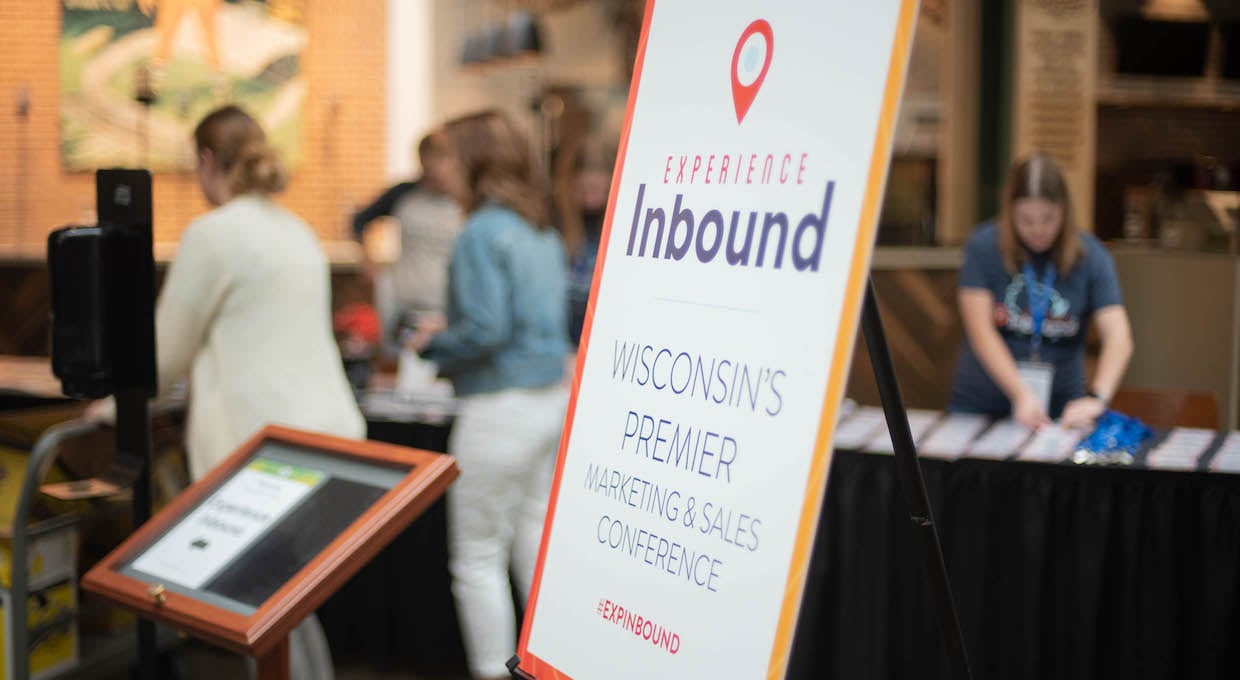5 Major Advantages of Using Inbound v. Outbound Email Marketing
Written by
An estimated 4 billion email users sift through or send an astonishing 319 billion business and consumer emails every day1 —- and 47.3% of them are digital marketing spam or phishing schemes.2
With nearly half of email traffic congested by junk, there is seemingly little room for legitimate email marketing. However, it’s worth the effort for industrial marketers to claim a rightful place in a contact’s email inbox.
Email generates an impressive $42 for every $1 spent1, making it a powerful and profitable marketing tactic provided it’s leveraged properly. Knowing the benefits of inbound vs. outbound email comes into play, as does understanding how to construct your B2B email marketing campaigns to consistently perform and avoid spam filters.
What is Inbound and Outbound Email?
There are nuanced but important differences between outbound email and inbound email, meaning a quick pivot to basic definitions is in order.
Outbound email is sent to audiences that are either unfamiliar with your company or have a general awareness but haven’t engaged with your services. It’s tantamount to an electronic cold call.
Sometimes for outbound email campaigns, email lists are purchased from third party providers that contain the contact information of people who fit at least some of your ideal customer criteria. The people on the lists do not explicitly request that you contact them, so your outbound emails run the risk of appearing “spammy” which could alienate potential customers.3
Inbound email eliminates aimless messaging. Instead of sending emails with the hope that recipients resonate with your company, products, or services, you already have an indication they are interested and a warm contact email.
Why? Inbound emails are sent to people who have somehow interacted with your company — signed up for your newsletter, requested additional information, scheduled a consultation, etc. In short, there is already a thread of interest established. Inbound email helps nurture the relationship.3
RELATED: What’s the Difference Between Inbound and Outbound Marketing?
5 Advantages of Using Inbound Email
The brief inbound v. outbound email definitions underscore that the type of email you choose influences results. It’s reasonable to assume that recipients of your messaging are more likely to become leads — and eventually customers — with inbound email, but it’s not magic.
Here are 5 key ways inbound email provides opportunities to target your marketing efforts:
1. Opted-In Contacts
The scattershot approach of outbound email marketing overlooks a fundamental element: contact opt-in. People you’re sending outbound email to have not consented to it, and you're setting the wrong tone for nurturing and closing the leads from the start.
On the other hand, inbound email marketing helps you start building organic lists of email contacts. As a true opt-in approach, you are offering something of value in exchange for contact information, such as:
- Blog articles
- Downloadable content
- Newsletters that are informative and also encourage email subscription through your blog and social media
By building your email campaigns around these true opt-in contacts, you'll see a much higher engagement rate as far as email opens, clickthroughs, and additional conversions. You'll also protect the reputation of your IP address by not getting flagged as spam.
2. Targeted Content
It's still quite common for B2B companies to do a blanket email campaign that includes all prospects or current customers. With contextual marketing and segmentation, you can quickly start to create more targeted lists of contacts based on their prospect/client status, industry type, product area interest, etc.
For example, let's say your company is a distributor of pumps and valves for a variety of industry types. An engineer/operator for a wastewater treatment facility has different needs and interests than an engineer at a beverage manufacturing facility.
Think about it; waste water and beverages shouldn't mix! By segmenting your lists and getting more targeted with your content, you're creating more appeal with your audience and providing more value based on their specific needs.
3. Value to the Recipient
Your first email in a campaign shouldn't go right for the sale, especially if it's a list of newer opt-in contacts.
Instead, start by providing content that helps them perform their job, answers common questions they have, or guides them through their decision-making process related to your product or service. This will begin to nurture the relationship and naturally move them closer to sale without feeling pressured.
4. Frequency/Timing
Inbound email cadences leverage communication frequency and timing that align with the unique sales cycles of every industry. Building your email campaigns based on this schedule, keeping these tips in mind:
- Structure your email frequency so sends are consistent without being too regular. For most B2B companies, this is once every two to four weeks
- Be mindful of the day and time you send emails. Tuesdays through Thursdays during normal business hours seem to be the most widely recommended, and most successful in our experience. But don't be afraid to experiment and do some A/B testing
- Optimize email length. Tailor it to the needs of your message, but don’t cram in every detail. The “Too Long; Didn’t Read” (TL; DR) attitude is a very real challenge, and people will not invest time in pontification
5. Ability to Change Subscription Options
Last but not least, with EVERY email you send be sure the recipient has the option to easily unsubscribe or change their subscription options.
Most email platforms are required to have this feature based on CAN-SPAM regulations, but it’s also professional courtesy. Your subscribers will appreciate the ease of being able to unsubscribe or change the frequency of when they receive emails.
As buyers continue to evolve and filter out the noise of unwanted marketing emails, it's up to you to maximize email marketing efforts. Improve your B2B marketing metrics and energize your inbound marketing program with best practices you’ll find in 10 Ways to Improve Your B2B Marketing Metrics.
SOURCES
1HubSpot, The Ultimate List of Email Marketing Stats for 2022, Undated
2Finances Online, 56 Email Statistics You Must Learn: 2022 Data on User Behaviour & Best Practices - Financesonline.com, Undated
3Power Digital Marketing, The Important Difference: Outbound Email vs. Inbound Email | Power Digital Marketing, July 24, 2019
Subscribe To Our Blog
Information. Insights. Ideas. Get notified every time a new Weidert Group blog article is published – subscribe now!
You May Also Like...

Artificial Intelligence
AI Agents Are Here—How Smart Businesses Are Using Them Now

Inbound Marketing
Podcasting Playbook: What We Learned After 100 Days of Running a B2B Podcast

Weidert Group News
Experience Inbound 2025: What’s Working Now (and What’s Next)
Accelerate Your Growth with
Weidert Group
If you’re ready to explore a partnership, request a personalized consultation with our team.

